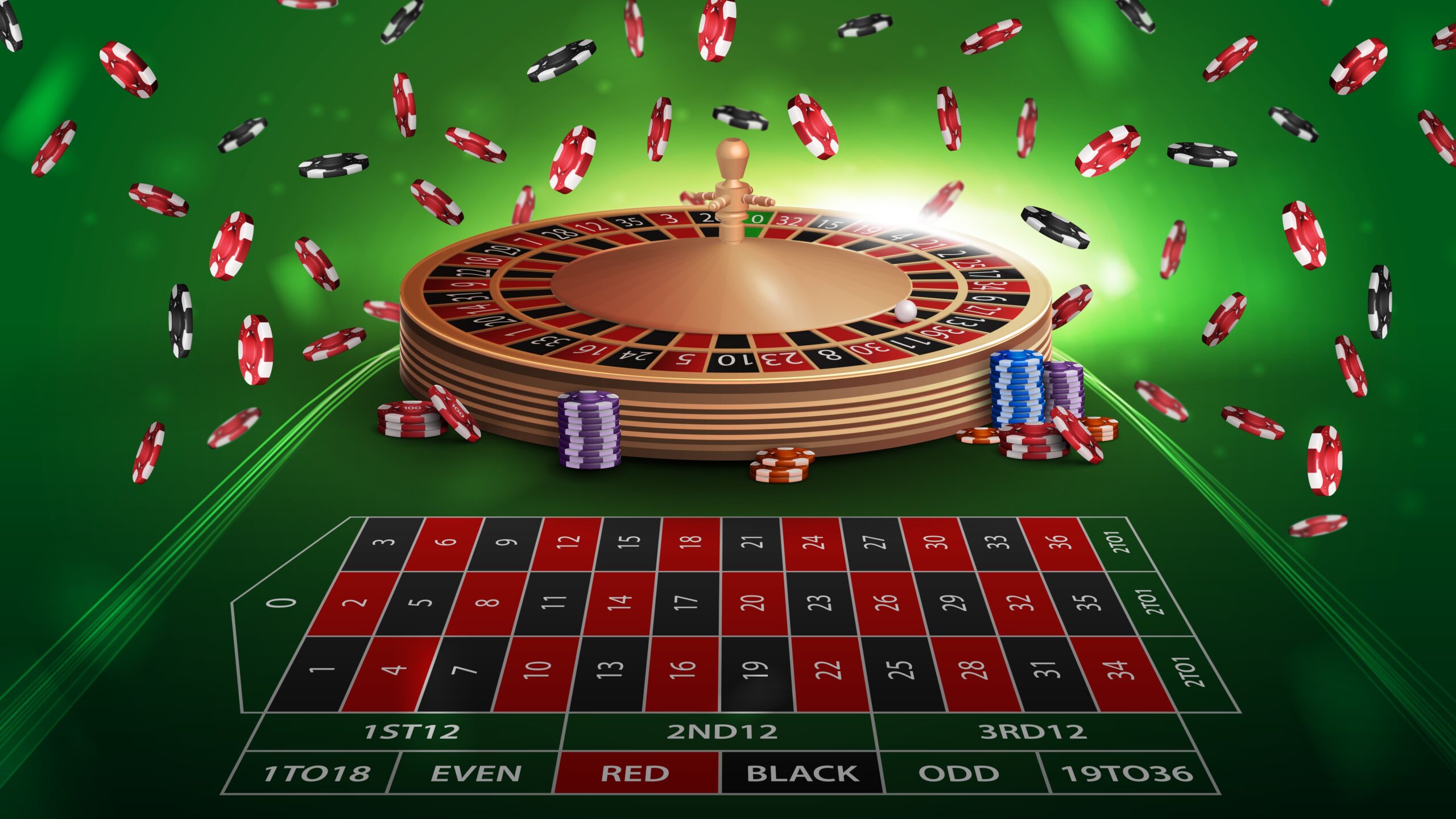Roulette, one of the most iconic casino games, has a long history dating back to 18th-century France. Over time, the game spread worldwide, with unique versions emerging in various countries. South Africa, with its rich gambling culture, has a distinctive take on the game, and understanding the mathematics behind South African roulette wheels can make all the difference for players looking to enhance their strategy.
Understanding the Roulette Wheel Layout
The first step to understanding South African roulette is to become familiar with the layout of the wheel. This will help you grasp how the mathematics works in practice. The South African version of roulette is quite similar to the European version, but it does have a few key differences that distinguish it from other versions. The South African roulette wheel typically has 37 pockets, numbered from 1 to 36, plus a single zero (0). The zero is important because it represents the house’s edge, and it makes the game different from American roulette, which features an additional double zero (00). This extra pocket in American roulette increases the house edge, making the South African version a bit more favorable for players.
In terms of color distribution, the numbers on the South African roulette wheel alternate between red and black, with the single zero (0) being green. This is standard in European roulette as well. The arrangement of the numbers is significant because it affects how bets are placed and the odds associated with those bets. Of the 36 numbers on the wheel, half are odd, and half are even, providing players with a nearly equal chance of betting on either odd or even numbers. Additionally, the numbers are divided into high and low groups, with the numbers 1 to 18 considered low and 19 to 36 considered high. This division further impacts betting options and strategies.
Understanding the distribution of numbers and their colors is crucial for any player looking to fully grasp the mathematics of South African roulette. The way the numbers are laid out determines the types of bets available and the respective odds for each. Players can make bets on specific numbers, or they can bet on broader categories like color, odd or even numbers, or high and low numbers. Each type of bet comes with its own set of probabilities, and the layout of the wheel plays a major role in these calculations.
This knowledge of the wheel’s layout is the foundation upon which players can start to analyze and apply mathematical principles in their betting strategies. Whether you’re a beginner or an experienced player, understanding the wheel’s design and the distribution of numbers will give you a clearer idea of how the game works and help you make more informed decisions when placing your bets. With this understanding, you’ll be better equipped to navigate the odds and the various betting options, enhancing your overall experience of the game.
The Mathematics of Betting in South African Roulette
In South African roulette, there are numerous betting options available, each with its own odds and payout rates. Let’s explore the most common types of bets and their mathematical foundations:
- Straight-Up Bet (Single Number)
- This bet is placed on a single number, including the zero. The odds for hitting a single number are 1 in 37, but the payout is 35 to 1.
- Probability: 1/37 ≈ 2.7%
- Payout: 35 to 1
- Example: If you bet R10 on number 7 and win, you would receive R350.
- Split Bet (Two Numbers)
- A split bet is placed on two adjacent numbers on the betting grid. The odds of winning are 2 in 37.
- Probability: 2/37 ≈ 5.4%
- Payout: 17 to 1
- Example: If you bet R10 on the split between numbers 10 and 11 and win, you would receive R170.
- Street Bet (Three Numbers)
- A street bet involves placing a wager on three consecutive numbers in a row on the grid.
- Probability: 3/37 ≈ 8.1%
- Payout: 11 to 1
- Example: If you bet R10 on a street bet covering numbers 1, 2, and 3 and win, you would receive R110.
- Corner Bet (Four Numbers)
- A corner bet covers four adjacent numbers, making it one of the most popular inside bets.
- Probability: 4/37 ≈ 10.8%
- Payout: 8 to 1
- Example: If you bet R10 on a corner bet covering numbers 1, 2, 4, and 5, and win, you would receive R80.
Outside Bets
| Bet Type | Description | Probability | Payout | Example |
| Red or Black | Bet on the color of the pocket where the ball will land. | 18/37 ≈ 48.6% | 1 to 1 | If you bet R10 on red and win, you would receive R20. |
| Odd or Even | Bet on whether the outcome will be odd or even. | 18/37 ≈ 48.6% | 1 to 1 | If you bet R10 on odd and win, you would receive R20. |
| High or Low | Bet on whether the ball will land on a low (1-18) or high (19-36) number. | 18/37 ≈ 48.6% | 1 to 1 | If you bet R10 on low and win, you would receive R20. |
The House Edge in South African Roulette
One of the fundamental concepts that every player needs to grasp when playing roulette is the house edge. The house edge is essentially the mathematical advantage that the casino holds over the player. This is how the casino ensures that, in the long run, it will make a profit from the game. In South African roulette, the house edge is determined by the inclusion of the zero (0) pocket on the wheel.
The house edge is calculated by considering the difference between the payout and the true odds of winning. For most bets in South African roulette, the house edge stands at 2.7%. This is the same as in European roulette, meaning that for every R100 wagered, players can expect to lose R2.70 over the long term, on average. It’s important to note that this percentage remains constant no matter how many times you play, as it’s an inherent part of the game’s structure.
The formula for calculating the house edge is as follows: (Payout x Probability) – 1. This simple equation shows the expected difference between the payout for a given bet and the true odds of winning. The house edge ensures that, while players might have short-term winning streaks, over the course of many games, the casino’s advantage remains intact.
For comparison, American roulette has a higher house edge due to the addition of the double zero (00) pocket. With this extra pocket, the house edge increases to 5.26%, making it a less favorable option for players. Understanding the house edge is crucial because it helps players manage their expectations and make more informed betting decisions.
How the Zero Affects Your Odds
The zero (0) on the roulette wheel plays a significant role in determining the odds and outcomes of the game. Its presence is what gives the casino its edge, ensuring that, over time, the house will come out ahead. If there were no zero, the game would offer even odds for even-money bets like red/black, odd/even, and high/low, resulting in a house edge of 0%. Here’s how the zero affects your odds:
- Without Zero: In a scenario where the wheel has no zero, the odds for betting on red or black, odd or even, would be perfectly balanced at 50%. This means that for every bet, you have an equal chance of winning or losing.
- With Zero: When the zero is included, the odds for even-money bets like red/black drop to 48.6%. This means you no longer have a 50% chance of winning, as the ball landing on zero results in a loss for all even-money bets.
- Impact on Other Bets: The zero also affects other types of bets on the wheel. For example, bets placed on a specific number or group of numbers are influenced by the presence of the zero. The overall probabilities of winning these bets are slightly reduced, as the zero adds an additional outcome that isn’t covered by most types of wagers.
- Casino Edge: Every time the ball lands on the zero, it’s a win for the casino. This outcome doesn’t benefit any player’s bet, meaning the casino’s advantage grows over time. In essence, the zero increases the house edge and ensures that players will lose more in the long run.
Expected Value of a Bet
| Bet Type | Probability of Winning | Payout | Probability of Losing | Expected Value (EV) |
| Straight-Up Bet | 1/37 ≈ 2.7% | 35 to 1 | 36/37 ≈ 97.3% | EV = (1/37 * 35) – (36/37 * 10) ≈ R0.95 |
| Split Bet | 2/37 ≈ 5.4% | 17 to 1 | 35/37 ≈ 94.6% | EV = (2/37 * 17) – (35/37 * 10) ≈ R0.27 |
| Street Bet | 3/37 ≈ 8.1% | 11 to 1 | 34/37 ≈ 91.9% | EV = (3/37 * 11) – (34/37 * 10) ≈ R0.24 |
| Red or Black Bet | 18/37 ≈ 48.6% | 1 to 1 | 19/37 ≈ 51.4% | EV = (18/37 * 1) – (19/37 * 10) ≈ -R0.54 |
| Odd or Even Bet | 18/37 ≈ 48.6% | 1 to 1 | 19/37 ≈ 51.4% | EV = (18/37 * 1) – (19/37 * 10) ≈ -R0.54 |
Betting Systems and the Mathematics Behind Them
Betting systems are often used by players who hope to improve their odds and offset the house edge. The idea behind these systems is to manage your bets in a way that either increases your chances of winning or maximizes your profits over time. However, it’s crucial to understand that no betting system can eliminate the house edge, which is a fundamental aspect of casino games like roulette. Instead, these systems focus on managing your bankroll and adjusting your betting strategy based on previous outcomes. While they can help players feel more in control, they don’t guarantee success and can be risky if not used carefully.
One of the most well-known betting systems is the Martingale system. This strategy involves doubling your bet after each loss, with the goal of recouping all previous losses as soon as you win. The idea behind the Martingale is that a win will eventually occur, and when it does, it will cover all prior losses, plus a profit equal to the initial bet. For instance, if you start with a bet of R10 and lose, the next bet would be R20. If you lose again, you would bet R40, and so on. Eventually, when you win, the profit will be enough to cover the cumulative losses and leave you with a net profit of R10, which is your original bet.
However, the Martingale system comes with a significant mathematical flaw: it assumes you have an infinite bankroll and there are no betting limits. In reality, players have limited funds, and the house usually imposes maximum bet limits on the table. This means that if you encounter a losing streak, your bets could quickly escalate beyond your financial capacity, or you could hit the casino’s betting cap. When either of these things happens, you may find yourself unable to continue the system and unable to recover your losses.
Despite its potential to offer quick wins, the Martingale system is not a foolproof strategy. In fact, the longer you play, the greater the risk that a losing streak could wipe out your bankroll. This highlights the fundamental flaw in many betting systems: while they may work for short periods, they do not change the overall odds of the game. Each spin of the roulette wheel is independent, and the house edge remains in place regardless of the betting strategy used. The Martingale system, like all others, ultimately cannot defeat the math behind the game, which favors the casino in the long run.
The Fibonacci System
The Fibonacci system is another betting strategy that many players use in an attempt to manage their bets and minimize losses. This system is based on the Fibonacci sequence, a series of numbers where each number is the sum of the two preceding ones. The sequence starts as follows: 1, 1, 2, 3, 5, 8, 13, 21, 34, and so on. The basic idea behind this system is to increase your bets in line with the Fibonacci sequence after each loss.
- In this system, players begin with a bet of 1 unit. If they lose, they increase their next bet to 1 unit again. After another loss, the next bet becomes 2 units, and then 3 units, and so on, following the sequence.
- When a player wins, they move two steps back in the sequence. For example, if they win after betting 5 units, their next bet would be 2 units, as they go two steps back in the Fibonacci sequence.
- Mathematical Principle: The main advantage of the Fibonacci system over others, like the Martingale, is that the rate of bet increase is slower. This means that it’s less risky for the player because the bets don’t increase exponentially. Instead, the bets increase in a more gradual manner, offering more time to recover from losses without requiring large bets.
- Risk and Reward: While the Fibonacci system may appear to offer a more manageable betting progression, it does not change the fundamental odds of the game. The house edge still exists, and the sequence doesn’t give you an advantage. You are still relying on the same basic principle that a win will eventually occur, but the system doesn’t guarantee that this will happen before you reach your bankroll limit.
- Drawbacks: The system still has its flaws. The Fibonacci sequence can cause your bets to increase significantly over a long losing streak, potentially putting your bankroll at risk. Additionally, like the Martingale system, if you hit a losing streak that continues for an extended period, you may eventually run out of money or hit the casino’s betting limit, preventing you from continuing with the system.
- Example: If you start with a bet of 1 unit and lose, your bets would increase as follows: 1 unit → 1 unit → 2 units → 3 units → 5 units → 8 units, and so on. If you win after a series of losses, you move back two steps in the sequence. This method slows the rate of increase in your bets compared to more aggressive systems like Martingale, but it does not eliminate the house edge.
- Conclusion: While the Fibonacci system offers a slower, less aggressive approach to betting than the Martingale system, it still doesn’t change the odds of the game. Players may feel more comfortable with the slower increase in bets, but ultimately, the house edge remains unchanged, and there’s no guarantee that the system will lead to consistent profits.




